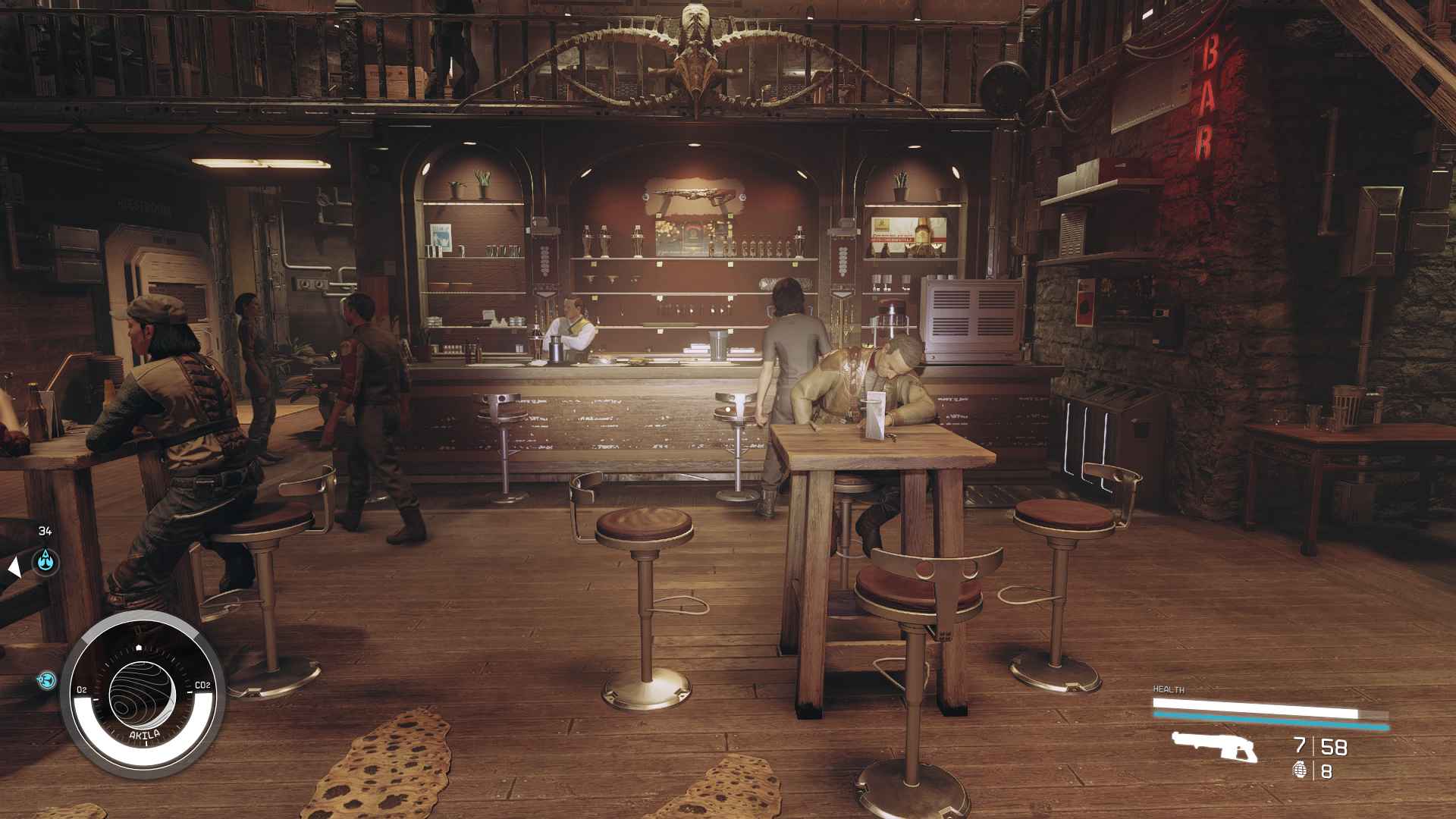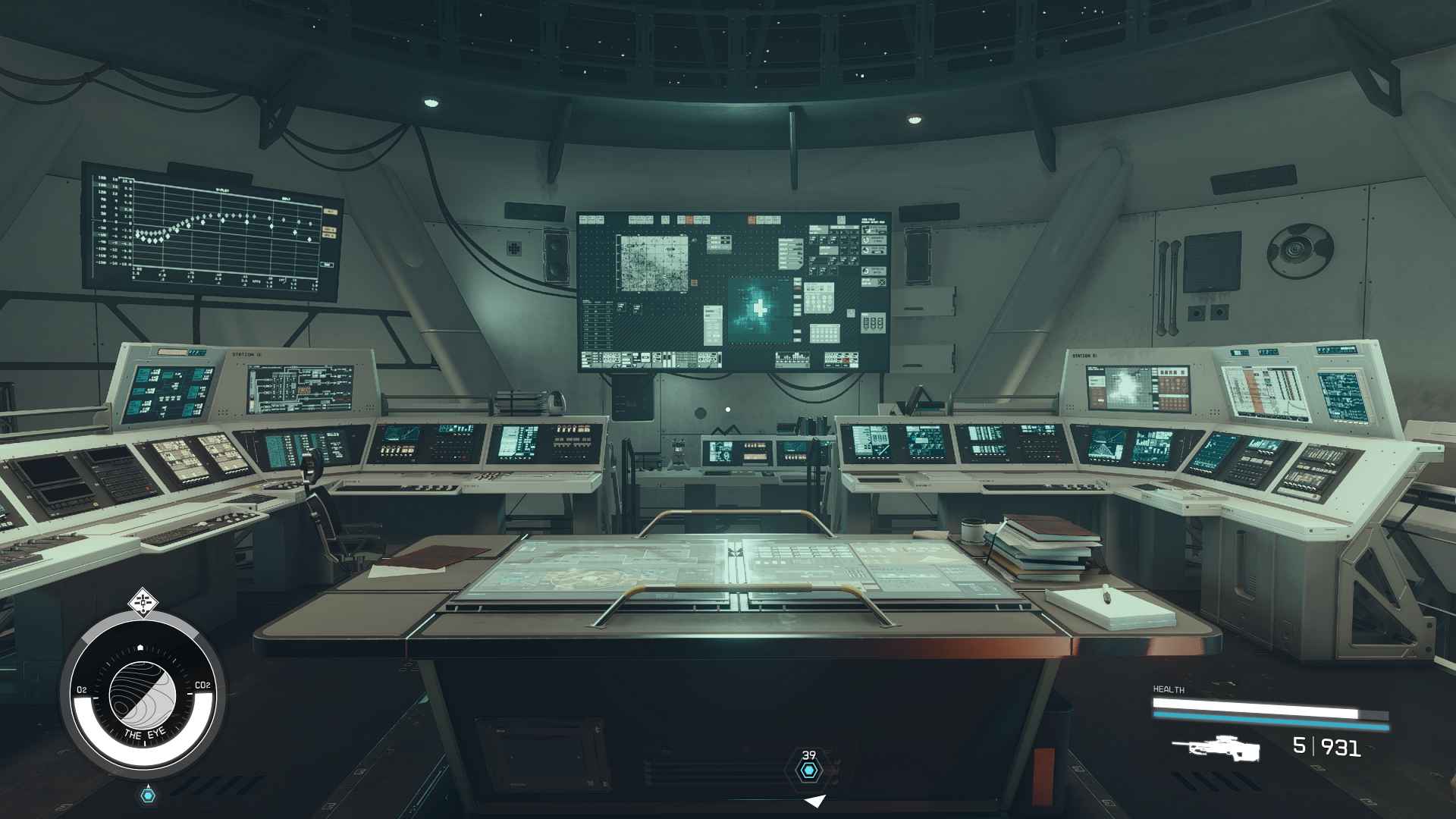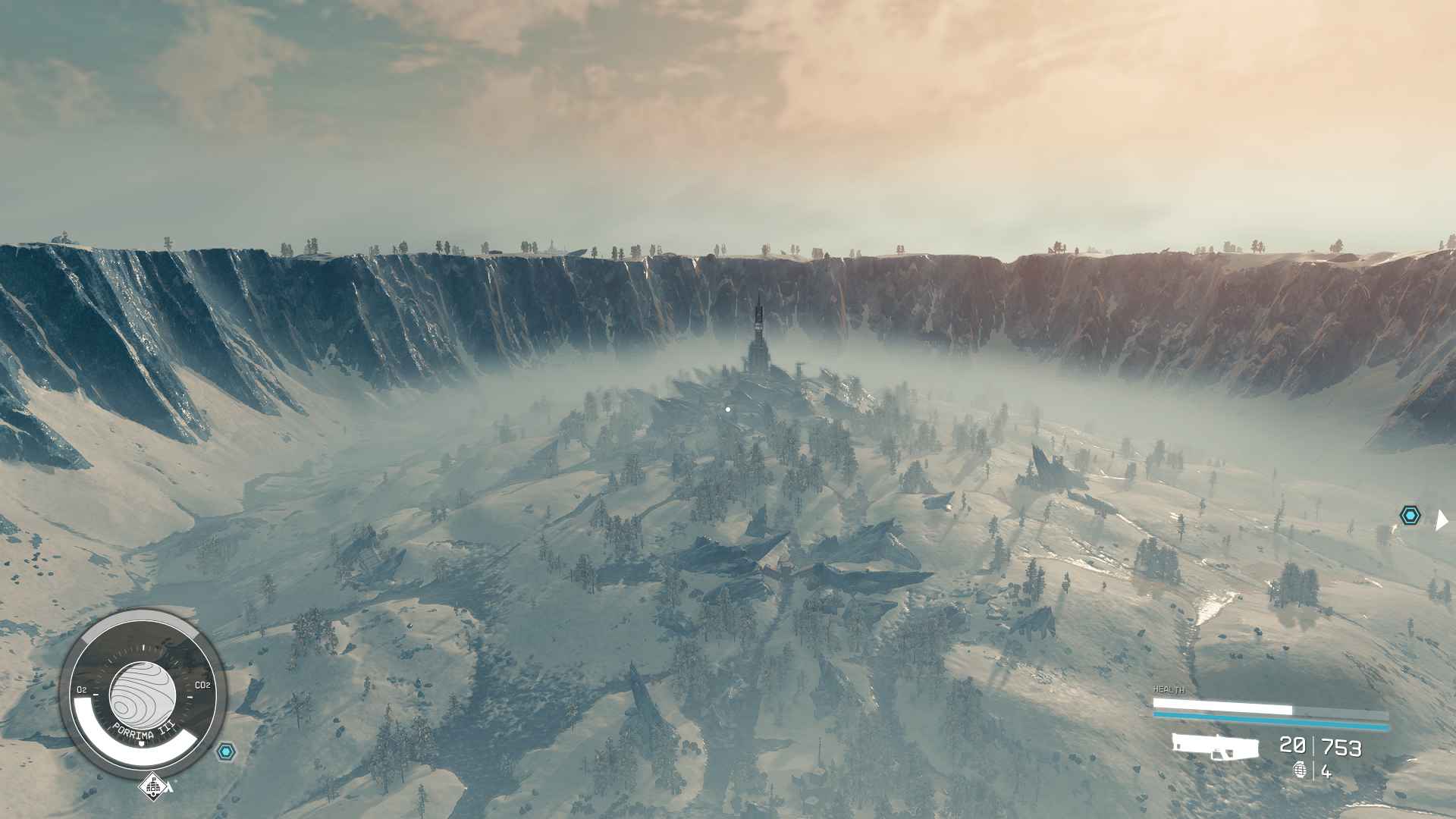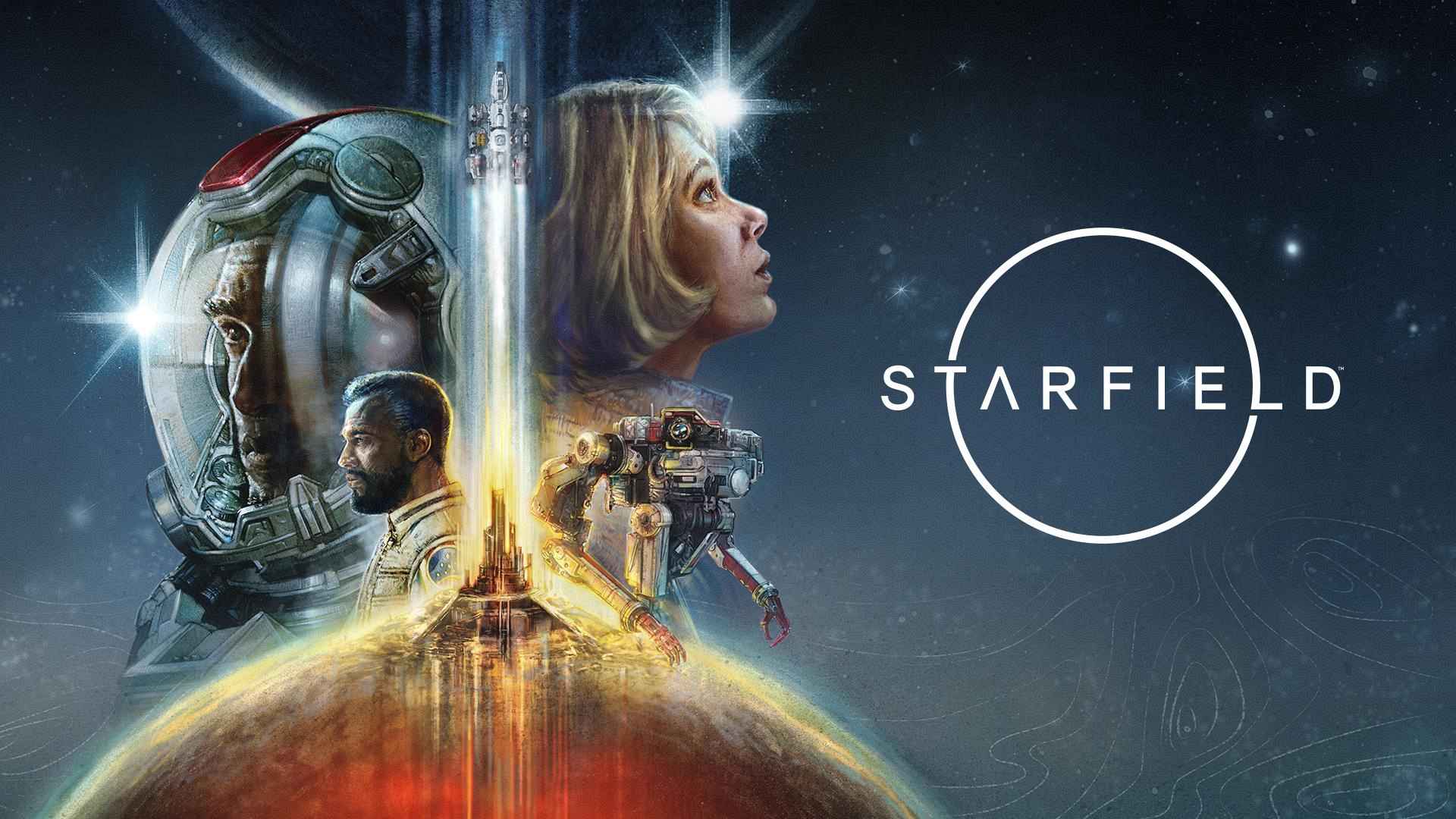Announced during E3 2018, Starfield finally makes its release 5 years later, and it’s Bethesda’s first new IP in the last 25 years. Expectations are high and Bethesda hasn’t revealed all that much about the game prior to launch.
Let’s dive right in!
So What is Starfield About?
Starfield has so much to do, it’s worth summing up what there actually is. You have a Main Story that lasts about 30 hours, 4 Faction Questlines that last another 25 hours, countless “Miscellaneous Missions” which are the game’s version of Side Quests usually found in Cities from NPCs, Terminal Missions that are randomly generated repeatable minijobs like Bounty Hunts, Activities which act as tutorials to try everything once, building Spaceships, building Outposts for resource extraction, Companion Romances, over 1000 Planets and Moons to explore with procedurally generated points of interest, a handful of populated major cities with merchants and quest givers, countless weapons and items to loot and craft. You can also do spaceship fights, visit space stations, steal spaceships, research new items and equipment mods, find skill magazines, and there is a New Game+ mode. It took me 100 hours to do everything once.
The gameplay is similar to Fallout and Elder Scrolls games. When you hear people say “Fallout in Space” there is some truth to it, at least what gameplay is concerned. A lot of the mechanics work the same – you have a wide variety of skills to start with, usually multiple ways to solve objectives either peacefully or violently, there is a leveling system, lockpicking, hacking into computers, stealing, and environmental hazards that cause afflictions. The game can be played in first person or third person.
The Story
The game starts in a mining outpost. There you are introduced to a tool called the “Cutter”, a laser that allows you to mine chemical elements. In the mines you come into contact with a mysterious alien artifact. A fight breaks out and you are tasked with bringing this artifact to The Constellation, the main faction in the game. They are the explorer of the universe. To go there you are given your first spaceship free of charge.
The moment you fly into space for the first time is pure excitement. There is a certain awe with the vastness of space that Starfield manages to capture really well. The planets look incredible whether you look at them from outer space or explore them on foot. The graphics are the best I have ever seen, it’s the first thing this generation that truly feels like “next-gen” has arrived. While I played most on a high-end gaming PC, I also tested the Xbox Series X version and it runs perfectly smooth on either platform. The game is super well-polished, a rarity for any game this size. I never had a single bug or crash in 100 hours. Not only do the textures look nice, but the people, facial animations, and voice acting are Bethesda’s best to date. All NPCs look detailed, especially the main companions. The light reflections are particularly fantastic, whether you are in a space station looking out into space, or going into cities for quests, I was constantly impressed with how good everything looks. Truly one of the best technological marvels this generation.
After a brief introduction to the ship controls, you need to use a Grav Drive to jump from one-star system to the next. Stars are too far apart to fly there with regular engine propulsion, so the Grav Drive allows you to instantly warp there. All ships have a “fuel” limit but fuel automatically recharges for free after each Grav Jump, you don’t need to mine any resources for it. The fuel stat only limits what distance you can travel in a single Grav Jump.
After you arrive in New Atlantis and do the first tasks for The Constellation, the game is pretty open-ended, you can do things in whatever order you like. The overarching goal is to collect all artifacts by doing Main Quests. What’s interesting here is that their locations are randomly generated so it will be a different experience for every player.
While you could finish a story-focused run in 30 hours or less, it doesn’t mean you should. The game is best enjoyed when taking time to explore, talking to people, and doing side quests to level up and gain money. It’s staggering how many side tasks there are, far more than story content. I went flying around to discover new stars and randomly had a Space Station call me as they were in trouble and needed help. So I docked, only to find out the crew had been slain by space pirates and all that was left for me was loot what the pirates left behind. Other times you will get calls from friendly spaceships in trouble to defend them or deliver something for them. You will also run into space pirates and must destroy them with your spaceship or try to outrun them with a Grav Jump.
There are a couple of populated cities with lots to explore. New Atlantis in the main city where you meet The Constellation. It’s quite large and there are lots of NPCs to talk to. The buzzing lights of Neon Core have a Cyberpunk-esque feeling and are run by the corporations. Akila City feels like something out of a Western movie and is run by the Freestar Rangers. Each Faction has its own capital city. There are a few smaller outposts too such as Cydonia on Mars.
The story is the best part of the game, it’s a good mix of negotiating diplomatically but also shooting when needed. The tight corridors of space stations and outposts make for surprisingly tactical gunplay, akin to something you’d expect from Rainbow Six. There is one enemy-filled room after another and you must clear them out one by one to get to the end. Enemies frequently drop new weapons. Each weapon uses different ammo, because of this you are constantly forced to try out new weapons, and this variety makes it more fun to play. Within the first 2 hours I had already found 10 different types.
The only thing I didn’t like about the story is that it ended a bit abruptly. It felt like too many mysteries were left unexplained. I thought I was at the halfway point after 20 main quests and then it was already over. I would’ve loved for it to keep going. But then again, any game that makes you want more of it has to be doing something right.
The Side Tasks
Most of Starfield’s content is side tasks. There are a lot. When walking around you will sometimes hear people calling out for help, or you get activities in the quest log that point you to them. Each faction also features a longer questline that lasts about 5 hours. They give a lot of money and exclusive completion rewards so they are well worth doing.
What I loved during the questing is how you form relationships with your companions. Based on your decisions the companion will give feedback if they liked or disliked what you did. You really get to learn every companion’s character and this can transform into a deeper romantic relationship. The amount of dialogue options in this game is mind-blowing. Depending on which companion is traveling with you they might interject in the dialogue, thus opening up different responses. Your skills also affect available bonus dialogues.
There are also “Mission Terminals” with infinitely respawning mini-jobs, always good if you are in need of cash. But the proper main Side Quests have fixed objectives and are given by specific people.
The quests are all quite different and varied, there’s a bit of everything. Some involve more diplomacy and negotiating with people, others are more action-packed, some encourage stealth or detective work. They are all quite easy to complete, everything has objective markers and if ever you get lost can use the scanner to see a line on the floor guiding you to the next objective. I’m generally not a fan of this type of handholding and running from point A to B but in a game this size it’s for the best. The one thing that would’ve been useful though is maps for the cities. While all planets have a “Surface Map”, this map is empty and only shows nearby points of interest, but not buildings, shops, or quest givers. For barren planets this is good enough, but for major cities it’s confusing to get around and to discover everything. I always worried about missing out on some cool side content because quest givers aren’t marked.
Exploration
Starfield’s biggest selling point – the exploration – is where it falls a bit flat. Once you take the quests away, the game feels empty. The way exploration works is that you can Grav Jump to solar systems, scan their planets, and land on them. The starmap is premade and fixed, but the available landing sites on planets are procedurally generated and different for every player. You can also land wherever you want by clicking any point on a planet (except gas planets and some extreme weather planets). Then you can open the scanner and all there is to do is scan flora and fauna a few times until they show 100% completion, and look for the randomly generated points of interest. These include things like caves and abandoned outposts. But there’s a catch: There is a very limited number of pre-programmed designs of each location. Just where they are is different. If you’ve seen one Outpost, you’ve seen them all. They are all 1:1 copy and paste, just respawning every couple hundred meters on every planet. So the location you find these structures are random but the structures themselves are premade and always the same. The planets are otherwise barren. It beats having planets completely empty but there is not enough variance with the recurring points of interest. Indoor locations like mines are also 1:1 copy and paste, you will run into the exact same layouts over and over again with the exact same enemy placements. This just makes exploration feel repetitive.
The game also needs drivable vehicles badly. You have limited oxygen to sprint, and depending on the gravity on any given planet you will consume more or less. You can’t run far and it takes a long time for oxygen to recharge. Running from one point of interest to the next takes too long, plus the carry limit makes exploration feel like a waste of time as you have to leave most stuff behind. This could’ve been made more fun if Resources didn’t increase the inventory weight. You also can’t fly with the spaceship in planets’ atmospheres. You can only fly in outer space, select a landing spot, then walk on foot. No flying or driving for planet exploration.
Building your own Outposts is underutilized. They have no practical function for gameplay and are not needed for any quests. Resources never need to be mined, they can simply be bought from any merchant, who restock their inventory after sleeping for 48 hours in-game time. You only have a limited number of Outposts to begin with, not enough that you could mine every type of chemical element.
The main use of Outposts is to produce elements. But each outpost can only mine one type of element and each planet has only certain types of elements available. You can establish cargo links to exchange materials between outposts but there isn’t much benefit to going through the trouble when you can simply buy all materials from merchants, and they are dirt cheap. Likewise, selling mined materials isn’t a good value proposition, they are effectively worthless but weigh a ton and just fill up the inventory. You get more money by selling a single weapon looted from an enemy than from a container full of materials. It’s generally not useful to pick up any resources and food items either, they just fill up the inventory limit and have no immediate use scenario. The main use of materials is to research new items and mod weapons and armor, but this is only useful on higher difficulties and it’s much less hassle to buy the materials at merchants. It would have been more fun if Outposts had some practical use in the story.
Possibly the biggest issue with exploration is the amount of loading screens. Bethesda’s game engine still relies heavily on them. Every place you enter has a loading screen, which dampens the experience when exploring cities. A lot of the loading screens make no sense at all. When you walk into your spaceship, effectively a very tiny metal box, there is a loading screen each time. Every time you enter and exit a building there’s a loading screen. There are some tiny rooms that require a loading screen to enter and exit. Cities are segmented into small districts, each with various buildings, elevators, and rooms to go into. But each forces a loading screen. Want to do a quest? You get one loading screen when landing at the launchpad, one when entering the city district where quest-givers are, another when entering the building where the quest-giver is, the same loading screens again on your way out, another loading screen to enter your ship, another to fast travel to destination, another to get off your ship, another to enter the target location, and ALL of those loading screens again on the way back. Thankfully with modern day NVMe drives the loading is fast (about 3 seconds on highend PC) but it still breaks the immersion and seems completely unnecessary to have this many loading screens in an open-world game. Hopefully, Bethesda’s next game will revamp this.
Verdict
Starfield is Bethesda’s most polished game yet. It has a ton to do but falls flat on the exploration aspect. Without vehicles, walking around planets is not an efficient way to travel. The story is fantastic however and the game is visually stunning. It’s a unique experience you shouldn’t miss out on.
***PC code was provided by the publisher***
The Good
- Visually Stunning
- A lot to do
- Fascination with Space
- Very polished
The Bad
- Repetitive Exploration
- Loading screens






